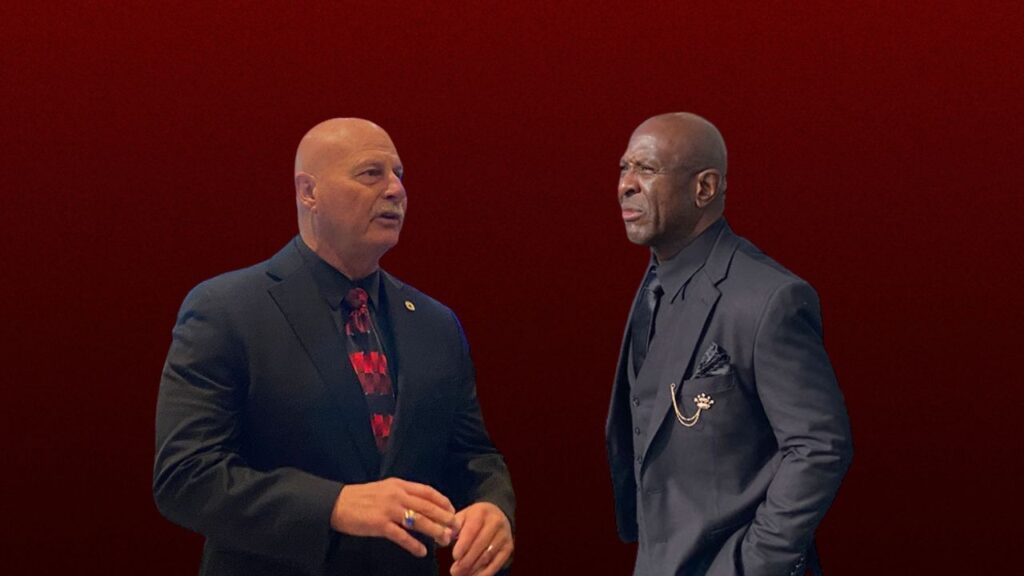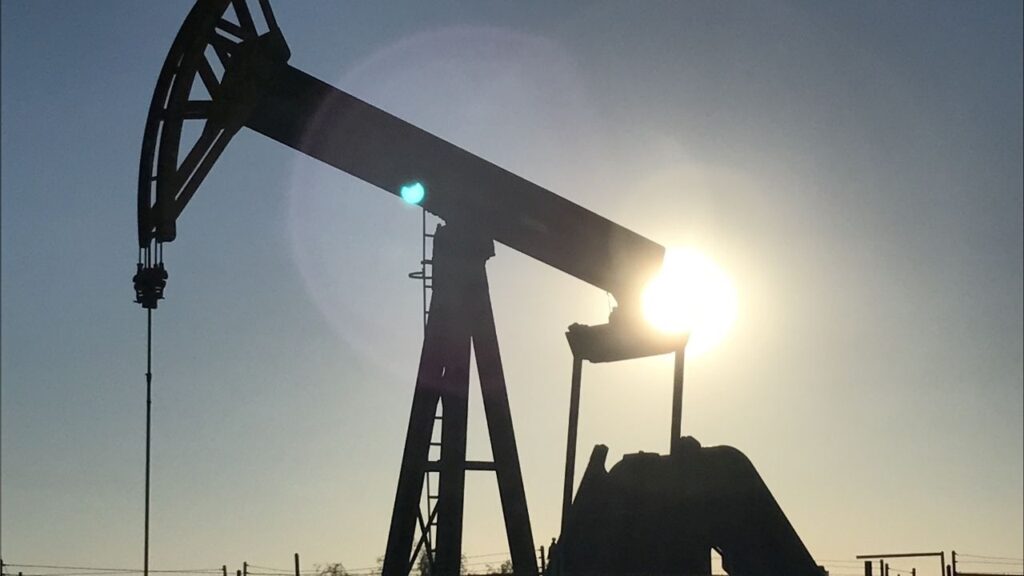Despite the increasing frequency of wildfires, residents of Mariposa, California, find reasons to stay, cherishing the community and natural beauty of their Gold Rush-era town. (KVPR/Rachel Livinal)

- Brenda Ostrom, a resident since 1998, continues to invest in her home despite the fire risks.
- Mary Boiler, a 22-year resident, has an escape plan in place but values the close-knit community of Mariposa.
- Residents and contractors acknowledge the risks but prefer the freedom and camaraderie of their small town to city living.
Share
|
Getting your Trinity Audio player ready...
|
Brenda Ostrom has lived in this Gold Rush-era town since 1998 and lately has been busy building what she calls her dream kitchen.

Rachel Livinal
The Merced FOCUS
“It’s all custom,” she says.
She’s already put in around $80,000 dollars into this renovation and expects it to be done by September. Ostrom likes the people in Mariposa and has gotten used to the climate. But she’s seen many fires come close to her town, too.
As a fast-moving fire broke out in the town’s hillside last week, residents rushed out of their homes. The French Fire started on the Fourth of July and quickly burned 908 acres.
Firefighters managed to stop the fire’s progress right at the town’s edge.
“There have always been fires but they’ve not been like this,” she says about the French Fire, which spread fast under a heat wave and caused residents to evacuate. The blaze threatened over 1,000 homes – many of which are the only homes residents in Mariposa have.
By some estimations, the French Fire is the seventh wildfire over the last 20 years that has grown to more than 500 acres. As of Wednesday, the blaze was 80% contained, and the cause remains under investigation, according to Cal Fire.
“I think the first year it happens, you’re like, ‘Wow. That was bad. But what are the chances of that happening again,’” Ostrom says, reflecting. “You don’t think it is, but then it’s just a recurring theme right now.”
Despite the frequency of fires in recent years, Ostrom isn’t ready to leave yet.
She’s planning long-term by getting her kitchen redone. But she admits she panicked when the fire sparked, because it brought down her neighbor’s home.
“In that two hours, I had decided that if my home burned, I would leave the community,” she said.
In total, four homes were lost to the French Fire. It’s a small number, compared to the dozens that have been lost to previous fires.
Related Story: Four Firefighters Injured While Fighting Mariposa’s French Fire
A Community Where You Must Be Ready to Go
Despite an unpredictable environment, many residents are attached to Mariposa.

When residents were allowed to return home after a few days, Mary Boiler unpacked a plastic bag her daughter had filled with precious items when the fire started.
In the bag were family photos, Mother’s Day cards and one of Boiler’s favorite colognes by Jo Malone.
“We didn’t have anything and it just almost brought a tear to my eye that she went through and gathered up the photos that meant the most to us and to her,” she said.
When the family noticed the first billows of smoke coming from the hills, Boiler’s thoughts didn’t go straight to saving personal items. She was busy hooking up a camper trailer, grabbing the cats and dog and keeping an eye on the fire’s growth.
After living in Mariposa for 22 years, Boiler and her family consider an escape plan to be routine.
Boiler and her partner used to live in the San Francisco Bay Area. But aspects of life in the foothills make up for what the Bay Area lacks, particularly in terms of social interactions, she says.
“We’re closer friends with our neighbor that we can’t even see [in Mariposa] than we ever were with neighbors that lived next door to us in San Francisco or in the East Bay,” she says.
Boiler said there’s “something for everyone” in Mariposa – a town nestled away from the bustle of Valley cities. For some, it’s a stop on the way to famous attractions in the Sierra Nevada like Yosemite National Park. For her, it’s simply a home – even though in this home she must memorize the sound of different aircrafts that are used to fight fires.
“We all know the sound of a CDF plane. We all know the sound of a spotter plane. We all know the sound of the helicopters,” Boiler says.
And just to be safe, she is going to leave her camper hooked up to her truck all summer long.
Related Story: Evacuation Orders for 843-Acre French Fire in Mariposa Started July 4
Finding Beauty Amid Disaster
Back at Ostrom’s house, fire is a regular topic between her and her construction contractor, Jason Fitzwater.

He lives up the highway in Jerseydale, another former gold-mining town.
As he drilled in Ostrom’s kitchen on a recent day, Fitzwater nervously chuckled when he shared the certainty of his house burning down during his lifetime.
“I’m assuming we’re all temporary residents here in the foothills,” Fitzwater says. “That’s the way I look at it…. And then if it doesn’t happen, then hot dog!”
Even with that in mind, Ostrom says she takes precautions to minimize the risks.
“You can’t think ‘My home is going to be OK because of the firefighters,’” Ostrom says. “They’re amazing. But it’s going to take clearing your house [and] using your common sense.”
Ostrom insists “you can’t wait for the government to somehow take care of everything in an emergency because they can’t.”
In the end, she says, those putting out the fires in her town are human too.
Neither Fitzwater nor Ostrom want to bear the consequences of living in a wildfire-prone area. But they don’t want to live in a big city, either, where people, they say, don’t enjoy the freedom of living in the hills and where they may not know each other as well as they do here.
Related Story: Mariposa Man Arrested on Suspicion of Starting Forest Fire That Burned More ...
That’s why, despite the risks, Ostrom continues to focus on the positive parts of Mariposa – on what keeps her here.
“After fire season, in the fall and in the winter and in the spring, it’s so beautiful that there’s this amnesia thing happening, and I think that’s part of being human,” Ostrom says. “That we can’t remember being in trauma all the time, that we find [a way] to forget about it.”
About the Author
Rachel Livinal is the higher education reporter for The Merced Focus.



















